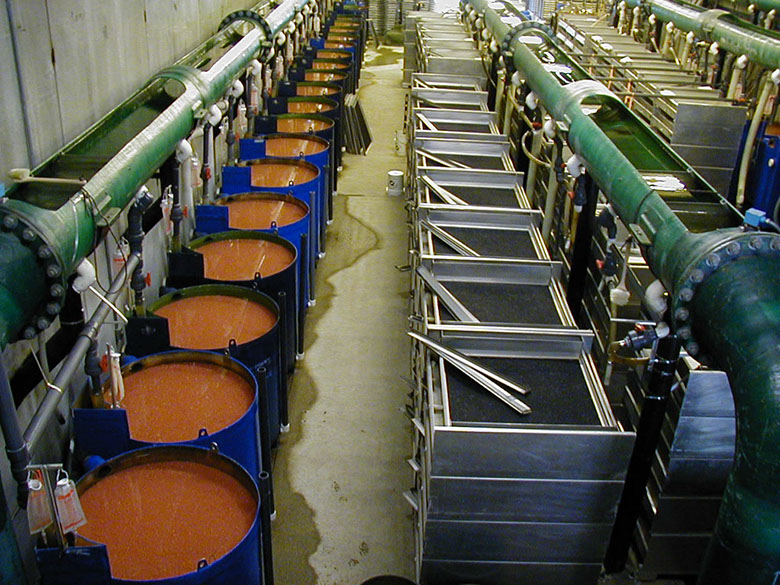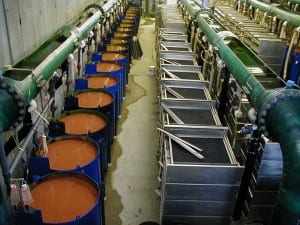A Southeast hatchery chum salmon run important to the region’s purse seine fleet has had a better start than last year’s failed run. Catches are on track to meet the forecast for the Hidden Falls dog salmon on Baranof Island.
For iFriendly audio, click here:
Hidden Falls is run by the Sitka-based Northern Southeast Regional Aquaculture Association, or NSRAA. “It’s looking like it’s about on schedule for our forecast of 800,000 return,” says Steve Reifenstuhl, the general manager for the private non-profit.
In the second week in July, the seine fleet’s harvest of Hidden Falls chums hit 290-thousand, nearly as many as last year’s season total. Reifenstuhl says he’d eventually like to see a much bigger run. “Well compared to last year, almost anything is good news,” he says. “So a forecast of 800-thousand is not great for Hidden Falls. I’d like to see runs of 1.5 million or better. You know our average in the 25 year history is closer to two million return. So that’s where we’re hoping to get it back to after some changes we’ve made in our strategy for release.”
Hatchery managers blamed last year’s poor return on humpback whales eating the juvenile chum salmon as they’re released into Chatham Strait. NSRAA has taken steps to make it more difficult for the whales to concentrate on Hidden Falls chum releases each year. The association is also looking into releasing larger, more mature juvenile salmon to see if that improves survival rate. That strategy includes a new cooperative project with the Gunnuk Creek hatchery in Kake. “So we’re taking another 10 million eggs at Hidden Falls and we will incubate those eggs and hold the fry until spring,” Reifenstuhl says. “And then we’ll transport the fry to Gunnuk Creek, or I should say, Southeast Cove, near Kake, and our crew and our equipment will rear those fish to 4.0 grams and we’ll release em. We’re planning on doing that for five years to test that.” The first releases under that program will be next year with the first adult fish returning in 2015.
This year is the first year for a 20 percent tax assessment on the commercial catch at Hidden Falls. Money from that tax will fund operations of the hatchery, instead of the proceeds from “cost recovery” fishing. That’s when a small number of boats is contracted to catch fish, with fishing times separate from the rest of the fleet.
Reifenstuhl says the new assessment has made the fishery easier to manage this year. “Don’t have to worry about shutting down or hiring boats for cost recovery,” he says. “That’s all done through the tax assessment and that’s why the fishermen wanted it was so they’d have more openings. Indeed that’s what’s happened. We’ve had a Sunday and a mid-week every week since we opened June 17th.”
Another mid-week, Thursday opening was scheduled for the third week in July at Hidden Falls. After that there may be closures around the hatchery as, NSRAA plans to start collecting the 150-thousand brood stock fish to produce future generations.













